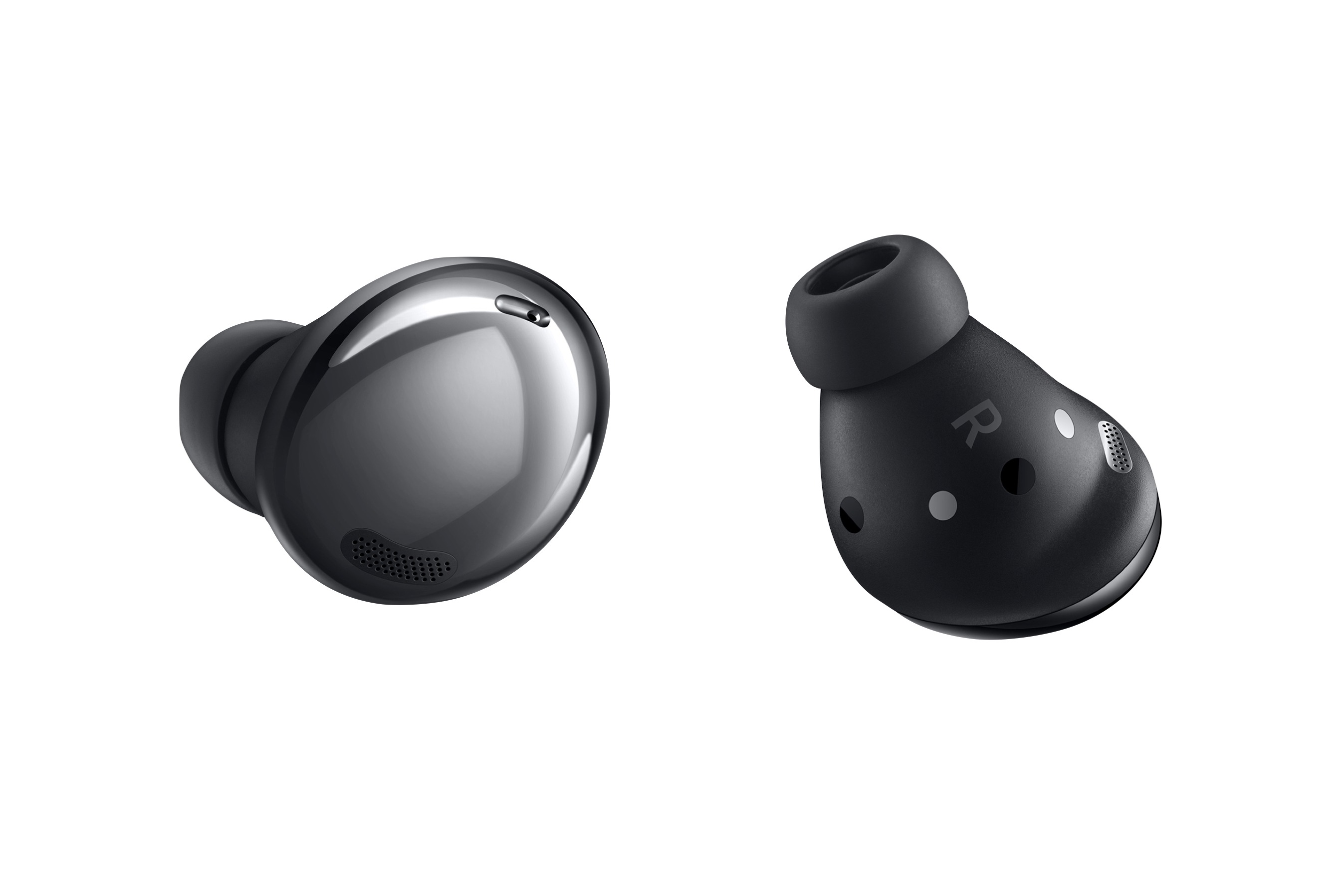Home>Production & Technology>Noise Cancellation>What Is Environmental Noise Cancellation


Noise Cancellation
What Is Environmental Noise Cancellation
Modified: January 22, 2024
Discover the benefits of environmental noise cancellation for a quieter and more focused environment. Learn how noise cancellation technology eliminates unwanted noise and enhances productivity.
(Many of the links in this article redirect to a specific reviewed product. Your purchase of these products through affiliate links helps to generate commission for AudioLover.com, at no extra cost. Learn more)
Table of Contents
- Introduction
- Understanding Environmental Noise
- What is Environmental Noise Cancellation?
- How Does Environmental Noise Cancellation Work?
- Applications of Environmental Noise Cancellation
- Advantages and Benefits of Environmental Noise Cancellation
- Challenges and Limitations of Environmental Noise Cancellation
- Conclusion
Introduction
Noise pollution has become an increasingly prevalent issue in our modern society. Whether it’s the constant hum of traffic, the cacophony of construction sites, or the buzz of electronic devices, environmental noise can have a negative impact on our well-being and quality of life. Fortunately, advancements in technology have led to the development of noise cancellation solutions that can help mitigate the effects of this unwanted noise.
Environmental noise cancellation is a cutting-edge technology that aims to reduce or eliminate background noise in various settings. By using sophisticated algorithms and specialized hardware, it actively works to cancel out ambient sounds, allowing for a quieter and more peaceful environment.
While noise cancellation technology has been primarily associated with headphones and audio devices, environmental noise cancellation takes it a step further by addressing noise pollution on a larger scale. Imagine being able to experience tranquility even in the midst of a bustling city or being able to work in a distraction-free environment no matter where you are. These are the possibilities that environmental noise cancellation offers.
In this article, we will delve deeper into the concept of environmental noise cancellation, exploring how it works, its applications, advantages, challenges, and limitations. By the end, you will have a comprehensive understanding of this innovative technology and what it means for creating more peaceful and harmonious environments.
Understanding Environmental Noise
Before delving into environmental noise cancellation, it’s important to have a clear understanding of what environmental noise actually is. Environmental noise refers to the unwanted sounds present in our surroundings that can cause annoyance, distraction, and even health issues.
Examples of environmental noise can include traffic noise from cars, buses, and motorcycles, construction noise from building sites, industrial noise from factories and machinery, and even noise from airplanes and trains passing by. Additionally, household appliances, electronic devices, and HVAC systems can contribute to the overall level of environmental noise.
Environmental noise is measured in decibels (dB), with higher values indicating louder sounds. Prolonged exposure to high levels of environmental noise can have detrimental effects on our physical and mental health. It can lead to increased stress levels, fatigue, reduced concentration, sleep disturbances, and even hearing loss in extreme cases.
Various factors can influence the impact of environmental noise, such as the duration of exposure, the frequency of the noise, and the individual’s susceptibility. For instance, someone living near a busy highway may experience higher levels of noise pollution compared to someone living in a quieter residential area.
Understanding the characteristics and sources of environmental noise is crucial in finding effective solutions to mitigate its negative effects. Environmental noise cancellation technology seeks to address this issue by actively reducing or eliminating unwanted noise, providing a more comfortable and peaceful environment for individuals.
What is Environmental Noise Cancellation?
Environmental noise cancellation, also known as active noise cancellation or ANC, is a technology that aims to reduce or eliminate unwanted noise from the surrounding environment. Unlike passive noise reduction methods that rely on physical barriers or insulation, environmental noise cancellation actively generates sound waves to cancel out incoming noise.
This technology utilizes microphones placed strategically in the environment to capture ambient sounds. The incoming sound waves are analyzed by advanced algorithms that identify the frequency and amplitude of the noise. Based on this analysis, the system generates an equal and opposite sound wave, known as an anti-noise signal, to cancel out the unwanted noise.
The anti-noise signal is then played back through speakers or headphones, effectively subtracting the noise from the environment. By creating these destructive sound wave patterns, environmental noise cancellation technology can significantly reduce the overall noise level, providing a quieter and more peaceful environment for individuals.
One crucial aspect of environmental noise cancellation is its ability to target specific frequencies. By identifying the dominant frequency of the noise, the system can generate an anti-noise signal precisely tailored to cancel out that frequency, making it highly effective in reducing repetitive or continuous sounds like engine noises or air conditioner hum.
It’s important to note that environmental noise cancellation works best for steady and predictable noise sources. Sudden or erratic sounds, such as loud bangs or shouts, may be more challenging to cancel out completely. However, even in such cases, the technology can still mitigate the impact and provide a significant reduction in overall noise levels.
Environmental noise cancellation technology has seen significant advancements and applications in various industries. It is now commonly used in areas such as transportation, architecture, healthcare, and even residential settings.
Next, we will explore in detail how environmental noise cancellation works and the underlying mechanisms that make it possible.
How Does Environmental Noise Cancellation Work?
Environmental noise cancellation is a complex and sophisticated technology that involves a combination of hardware and software components to effectively reduce or eliminate unwanted noise. The process can be broken down into several key steps:
- Sound Capture: Environmental noise cancellation begins with capturing the ambient sound using microphones strategically placed in the environment. These microphones pick up the incoming noise, which serves as the input for the noise cancellation system.
- Signal Analysis: The captured sound is then analyzed using advanced algorithms that assess the frequency, amplitude, and other characteristics of the noise. This analysis is crucial in understanding the properties of the noise and generating an appropriate anti-noise signal.
- Anti-Noise Generation: Based on the analysis, the system generates an anti-noise signal that is precisely tailored to cancel out the specific frequencies of the incoming noise. This anti-noise signal is the opposite waveform of the noise, designed to interfere destructively and effectively cancel it out.
- Anti-Noise Playback: The generated anti-noise signal is then played back through speakers or headphones in real-time. By doing so, the anti-noise signal combines with the incoming noise, resulting in destructive interference and cancellation of the unwanted noise.
- Adaptation and Fine-tuning: Environmental noise cancellation systems often employ adaptive algorithms that continuously monitor the environment and adjust the anti-noise signal accordingly. This adaptation helps account for changes in the noise characteristics and enhances the cancellation effectiveness.
It’s important to note that the success of environmental noise cancellation depends on several factors, such as the accuracy of the signal analysis algorithms, the quality and placement of the microphones, and the effectiveness of the anti-noise generation and playback systems. Additionally, the performance of environmental noise cancellation can vary depending on the type and intensity of the noise being targeted.
While environmental noise cancellation is highly effective in reducing steady and predictable noise sources, it may have limitations when it comes to sudden or impulsive sounds. This is because the technology requires time to analyze the noise and generate an appropriate anti-noise signal, which may not be feasible for rapid or unexpected sounds.
Nevertheless, environmental noise cancellation technology continues to advance, and ongoing research aims to overcome these limitations. With continued innovation, we can expect more refined and efficient solutions to combat environmental noise and create noise-free environments.
Applications of Environmental Noise Cancellation
Environmental noise cancellation has a wide range of applications across various industries. Here are some notable areas where this technology is being utilized:
- Transportation: One of the prominent applications of environmental noise cancellation is in transportation, particularly in vehicles such as cars, airplanes, and trains. By integrating noise cancellation technology into their designs, vehicles can provide passengers with a quieter and more comfortable travel experience, reducing the impact of engine and road noise.
- Architecture and Construction: Environmental noise cancellation is also finding applications in architecture and construction. By incorporating noise cancellation systems in buildings, it becomes possible to create quieter and more peaceful indoor environments, even in noisy urban areas. This can greatly enhance the quality of life for residents and occupants.
- Healthcare: In healthcare settings, environmental noise cancellation can play a crucial role in creating a more peaceful and conducive environment for patients and healthcare professionals. By reducing background noise in hospitals and clinics, patients can experience improved rest and recovery, while healthcare providers can communicate more effectively without distractions.
- Workspaces and Offices: Noise pollution in offices and workspaces can have a significant impact on productivity and well-being. Environmental noise cancellation technology can help create a more focused work environment by reducing distractions from conversations, equipment noise, and other ambient sounds. It enables employees to concentrate better, resulting in increased productivity and job satisfaction.
- Public Spaces: Public spaces like libraries, museums, and theaters can greatly benefit from environmental noise cancellation. By implementing this technology, these spaces can maintain a tranquil and quiet atmosphere, allowing visitors to fully immerse themselves in the experience without disruptive noise.
These are just a few examples of the many applications of environmental noise cancellation technology. As the technology continues to evolve, we can expect to see its integration into a wider range of industries and settings, ultimately leading to more peaceful and noise-free environments for individuals around the world.
Advantages and Benefits of Environmental Noise Cancellation
Environmental noise cancellation offers numerous advantages and benefits for individuals and various industries. Here are some of the key advantages:
- Improved Quality of Life: One of the primary benefits of environmental noise cancellation is the enhancement of quality of life. By reducing or eliminating unwanted noise, individuals can enjoy a quieter and more peaceful environment, leading to reduced stress levels, improved concentration, and better overall well-being.
- Increased Productivity: Environmental noise cancellation technology can significantly improve productivity, especially in work and study environments. By eliminating distractions from background noise, individuals can focus better, accomplish tasks more efficiently, and maintain higher levels of concentration.
- Enhanced Communication: In settings where clear communication is essential, such as offices or healthcare facilities, environmental noise cancellation plays a vital role. By minimizing background noise, this technology enables individuals to communicate more effectively, enhancing collaboration and preventing misunderstandings.
- Better Sleep: Environmental noise can be a major disruptor of sleep, leading to sleep disturbances and related health issues. With noise cancellation, individuals can create a quieter sleeping environment, promoting better sleep quality and improved overall rest and rejuvenation.
- Reduced Health Risks: Prolonged exposure to high levels of environmental noise can have adverse effects on health, including increased stress, elevated blood pressure, and even hearing loss. Noise cancellation technology helps mitigate these risks by providing a quieter environment and reducing the impact of noise-related health issues.
- Customizability: Environmental noise cancellation systems offer customizable features that allow individuals to adapt the technology to their specific needs. Users can adjust the level of noise cancellation based on their preference, enabling them to strike the right balance between reducing noise and maintaining awareness of important sounds in their environment.
- Versatility: Environmental noise cancellation technology is versatile and can be applied to various settings and applications. From transportation to healthcare, public spaces to residential areas, this technology can be integrated into different industries to enhance experiences and create more pleasant and comfortable environments.
These advantages highlight the positive impact that environmental noise cancellation can have on individuals’ daily lives, workplace productivity, and overall well-being. As the technology continues to advance, we can expect further improvements and broader accessibility, ultimately making noise-free environments more achievable for everyone.
Challenges and Limitations of Environmental Noise Cancellation
While environmental noise cancellation technology offers significant advantages, it also faces certain challenges and limitations. It’s essential to understand these limitations to have a realistic expectation of what the technology can achieve. Here are some of the key challenges:
- Effectiveness on Sudden or Impulsive Sounds: Environmental noise cancellation technology is most effective in reducing steady and predictable noise sources. However, it may have limitations when it comes to sudden or impulsive sounds like loud bangs or shouts. The technology requires time to analyze the noise and generate an appropriate anti-noise signal, which may not be feasible for rapid or unexpected sounds.
- Variability of Noise Characteristics: Environmental noise can vary in terms of frequency, amplitude, and other characteristics. While noise cancellation algorithms are designed to adapt to different noise profiles, variations in noise characteristics may impact the effectiveness of cancellation. Some noise frequencies may be more difficult to cancel out completely, requiring more sophisticated algorithms and hardware.
- Impact on Sound Quality: A challenge with environmental noise cancellation is achieving a balance between noise reduction and sound quality. Systematically canceling out certain frequencies may inadvertently affect the overall sound quality of other desired sounds, such as voices or music. Striking the right balance between noise cancellation and maintaining sound clarity can be a technical challenge.
- Limitations of Hardware and Placement: The performance of environmental noise cancellation is dependent on the quality and placement of hardware components, such as microphones and speakers. Proper placement is crucial to capture accurate sound data and deliver the anti-noise signal effectively. Suboptimal hardware or incorrect placement can impact the cancellation effectiveness.
- Power Consumption: Environmental noise cancellation systems require power to operate, which can be a limitation in certain applications. Battery-powered devices may have limited battery life when noise cancellation is continuously active. Balancing power consumption and noise cancellation effectiveness is an ongoing challenge in portable devices.
- Cost and Accessibility: While environmental noise cancellation technology has become more accessible in recent years, high-quality noise cancellation systems can still be costly. Affordability and accessibility can be barriers for widespread adoption in certain industries and settings, limiting its availability to those who could benefit from it.
Despite these challenges and limitations, ongoing research and technological advancements continue to address these issues, pushing the boundaries of what environmental noise cancellation can achieve. With continuous innovation, we can expect improvements to overcome these limitations and further enhance the effectiveness and accessibility of this technology.
Conclusion
Environmental noise cancellation technology has revolutionized our ability to create quieter and more peaceful environments. By actively reducing or eliminating unwanted noise, this technology offers numerous benefits for individuals and various industries.
With its applications in transportation, architecture, healthcare, and workspaces, environmental noise cancellation technology has the potential to significantly improve quality of life, enhance productivity, and promote better health outcomes. The ability to create noise-free environments can lead to reduced stress levels, improved concentration, and better overall well-being.
Despite its advantages, environmental noise cancellation does come with certain challenges and limitations. Effectiveness on sudden sounds, variability of noise characteristics, and the impact on sound quality are a few factors that need to be considered when implementing this technology. Additionally, cost and accessibility can be barriers to widespread adoption in certain settings.
However, ongoing research and development are focusing on improving the technology and addressing these challenges. As advancements continue to be made, we can anticipate more efficient noise cancellation algorithms, better hardware, and increased affordability.
In conclusion, environmental noise cancellation technology holds great promise for creating noise-free environments in various applications. Whether it’s in transportation, healthcare, or workplaces, the ability to reduce or eliminate unwanted noise can vastly improve our daily lives. By embracing and advancing this technology, we can work towards a quieter, more peaceful world for everyone.











